Sensory bins with tweezers
Author: Anne Vos
Teacher and mother
We love sensory bins! I love designing and putting them together and Lotte loves playing with them, so it's a win-win.
A sensory bin stimulates a child to use one or more of his or her senses (sight, hearing, touch, smell, taste) through its contents. It is also a very suitable means to practice fine motor skills and you can incorporate all kinds of other learning experiences into it, such as counting, ordering, letter knowledge, rhyming. Moreover, it is a great way to stimulate fantasy play. And all that in a very attractive, fun way that also doesn't have to cost much!
Sensory bins are not specifically suited to a particular group of children; all children can enjoy and benefit from them. However, not all children necessarily benefit from them in the same way. To give you an idea of how you can use such a bin, I will give some examples.
- Lotte, for example, is a real thinker and can sometimes worry quite a bit, so for her, digging around in a container of rice and transferring the rice from one container to the other is a good way to let go of worrying for a while and to concentrate on feeling and experiencing. Especially when she is tired, it really helps her to relax. But she also has a very rich imagination and loves to play whole role-playing games in and around the container.
- If you have a child with a fine motor skill limitation, the box can be a fun way to practice fine motor skills. For example, you can do this by filling the box with items that challenge them to grab small objects. If you don't want to make it too obvious that this is the intention, because your child finds practicing frustrating, you can incorporate practicing unnoticed by taking a favorite theme. For example, for a pirate fan, you could hide coins for the treasure between blue rice and let him or her search for the treasure. Or hide small items in clay or kinetic sand and let them dig it out with their hands.
- For a child with an autistic disability, it can be a way to calm down by stimulating a certain sense and possibly linking it to a subject that intrigues him or her at that moment. Letting sand slide between the fingers is often a favorite calmer, but in that case rice will probably also be a good choice. Then take rice in cheerful colors and it becomes extra interesting. Or fill a container with pompoms in different sizes in the favorite color. If there is a great interest in spinning and rolling objects, fill the container with balls, spinning tops, screws, corks, bottle caps and whatever else you can think of that spins or rolls.
- If a child has trouble with math or reading, you can playfully incorporate practice games into the box by challenging them to count certain objects that they like (how many little cars/green dinosaurs/princesses in pink dresses/chickens on the farm) or by hiding letters or putting objects with rhyming names in the box.
- For a child with speech problems, you can also put objects in the box that invite practice. For example, if a certain sound is difficult to pronounce, hide all kinds of things between paper scraps that have names that start with that sound or contain that sound and go treasure hunting. When you find the object, you name what you have found together very enthusiastically.
There are countless possibilities, as long as you connect with your child's interests. To find out what interests they have, you can watch your child while they play to see if there are topics that keep coming back, listen to your child to find out what they often talk about, but you can also just ask your child what they find interesting at that moment. And of course you can also connect with the time of year (summer, fall, winter, spring, Saint Nicholas, Christmas, Easter, birthday, ...). And if your child has a certain disability or a learning disability, discuss with the therapist or teacher that you want to make a sensory bin and ask if he or she has tips for what you could put in the bin.
I often make the bins myself as a surprise for when Lotte comes home from school. She loves to dig through the rice or beans with her hands, scoop and pour, but also to make up whole stories with the Playmobil or Frozen figures in a play decor that I have made in the bin.
It also happens that she suddenly decides that she wants a princess bin (pink rice with glitter, pink glass beads, Playmobil princesses) or an undersea bin (blue rice, shells, Playmobil fish and divers) to play with and that she dives into the cupboard herself to collect the right color rice and other supplies. My task is then limited to getting an empty storage box.
What is also fun is to make the box together. First, alone or together, you think of a theme and then you let your child look for fun things to put in it.
And whether I made the box or she put it together herself, it's always good for at least an hour of nice, quiet play and relaxation!
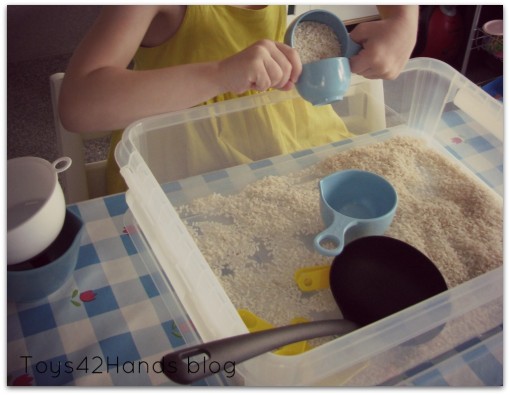
Measuring and weighing (white rice, measuring spoons, soup spoon, funnel)
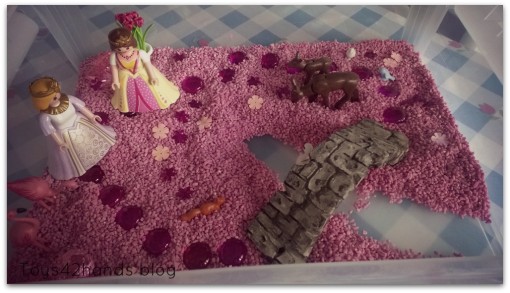
Princess Garden (pink painted rice with glitter, glass beads, sequins, Playmobil princesses and animals, bridge for aquarium)
How to make a sensory bin?
- To start with, it is useful to take a theme as a starting point. As I already indicated, the best sensory bins have a theme that matches something your child is very busy with or interested in. This could be anything: the color red ( various red objects ), winter, princesses, counting, the first letter of his or her name ( letter magnets, objects that start with that letter ), fish, farm.
- Then of course you need a container. I usually use the storage boxes with (clip) lid from Hema, because they are transparent, can withstand a knock and you can easily close them after playing and put them aside for another time. These containers come in all kinds of sizes, but I prefer to use 40x30x12 cm or 50x39x18 cm. For multiple children, a bed box is a good alternative, but then you will of course need more material to fill it. If you have a sand and water table, you can also use that. Or take a container that fits the theme, for example a wooden bowl or tray for an autumn theme or a Christmas tree-shaped baking tin for a Christmas container.
- Think in advance about where your child is allowed to play with the box and how well you can handle spills. In the heat of the game, things can sometimes go over the edge. I usually put the box on a table. If they are playing with water, I put a large towel underneath it and otherwise I grab the dustbuster or vacuum cleaner after playing. If you don't have the time or don't feel like it, you could also put the box on the floor with a sheet or tablecloth underneath, then you only have to shake it out after playing. And in the summer you can of course go outside!
- Of course, the container also needs to be filled with something. There are many possibilities, depending on your theme and the age of your child. With small children, you should of course think carefully about whether they can put things in their mouths and whether that is safe! Our favourite filling materials are: uncooked white rice or pasta, uncooked coloured rice (rice, a good dash of poster paint and possibly some glitter, stir and let dry on a flat dish) or pasta, water, paper scraps, kinetic sand, dried corn/beans/pulses, streamer, cotton wool. Rice, pasta and beans/pulses/corn can be stored for a very long time in press-and-seal bags or in food storage containers, so that you can reuse them again and again.
- You can add all sorts of extras to this base that match your theme, such as pompoms, cut-up straws, beads and sequins, buttons, pipe cleaners/chenille wires, (coloured or natural) ice cream or matchsticks, gel balls (in water), coarse or fine glitter, leaves/twigs/pine cones, etc., glass beads, ribbons, shells, stones and so on.
- Finally, add some play materials so the fun can begin. This can be anything, but you can always count on scoops, spoons, bowls, funnels, plastic tweezers (for example jumbo tweezers from Toys42Hands), toilet and kitchen rolls (whole or cut in half lengthwise as a kind of slide), measuring spoons and cups, tea strainer, egg carton/muffin tin/serving dish with compartments and of course small toys such as Playmobil (animals, dolls, furniture, etc.), cars, plastic animals or dolls or whatever your child likes. A big favorite of Lotte's is to let the Barbies swim in a somewhat larger and deeper storage box filled with (lukewarm) water, shells, toy fish and Playmobil dolls. In short: you can't think of anything that can't fit in there!
Winter (white rice, glass beads, straws cut into pieces, sequins, pompoms, measuring spoons, tea strainer, jumbo tweezers, divided bowl)
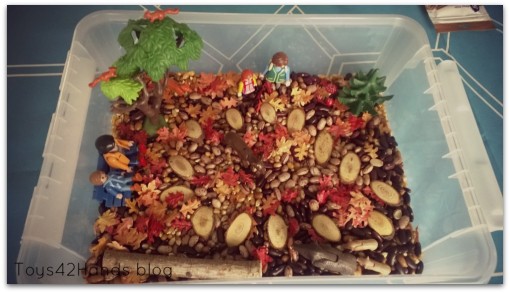
Autumn walk (different types of dried beans and corn, pieces of wood, small fabric autumn leaves, Playmobil)
If you are enthusiastic, but don't know where to start: the photos in this post show some bins I made for Lotte last year. And if you search on Google or Pinterest for 'sensory bins/tubs', you will find many more examples.
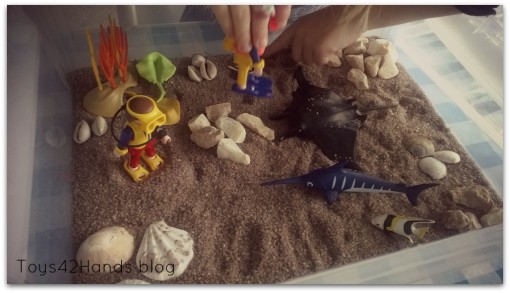
Deep sea diving (deco sand, shells, stones, Playmobil)
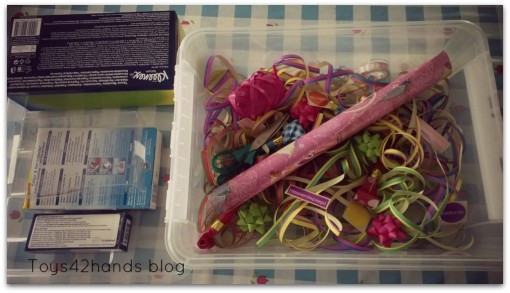 Birthday (streamer, wrapping paper, gift ribbons, bows, stickers, scissors, tape, boxes for wrapping)
Birthday (streamer, wrapping paper, gift ribbons, bows, stickers, scissors, tape, boxes for wrapping)
Oh yes, one last tip: I always agree with Lotte that I understand that during playtime something can go over the edge of the box, but that she has to clean up if I see that she is deliberately going to sprinkle the filling across the room, just to sprinkle. The latter has never been necessary by the way, because she thinks the boxes are far too much fun to throw the contents around… ;-)

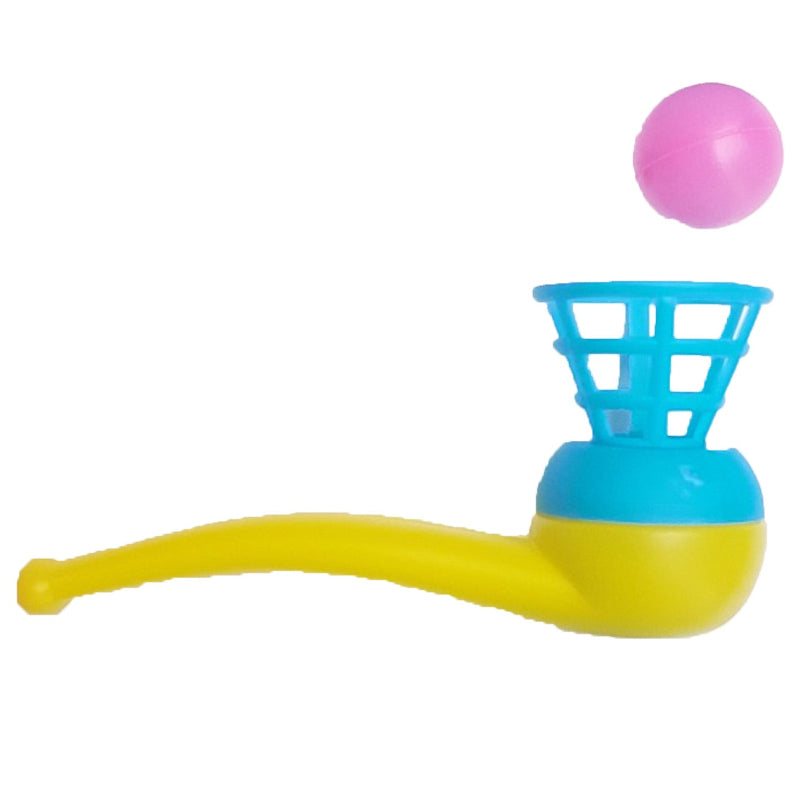
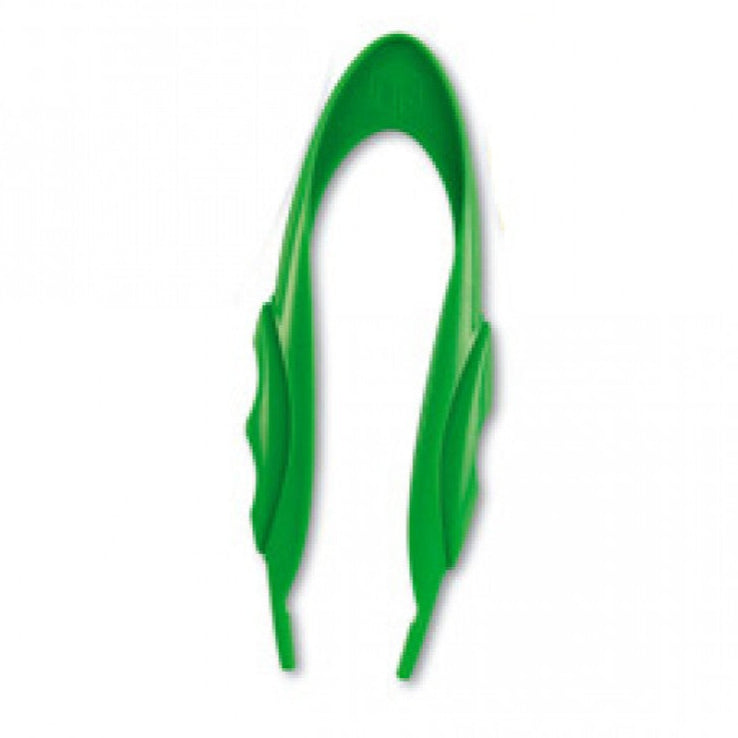
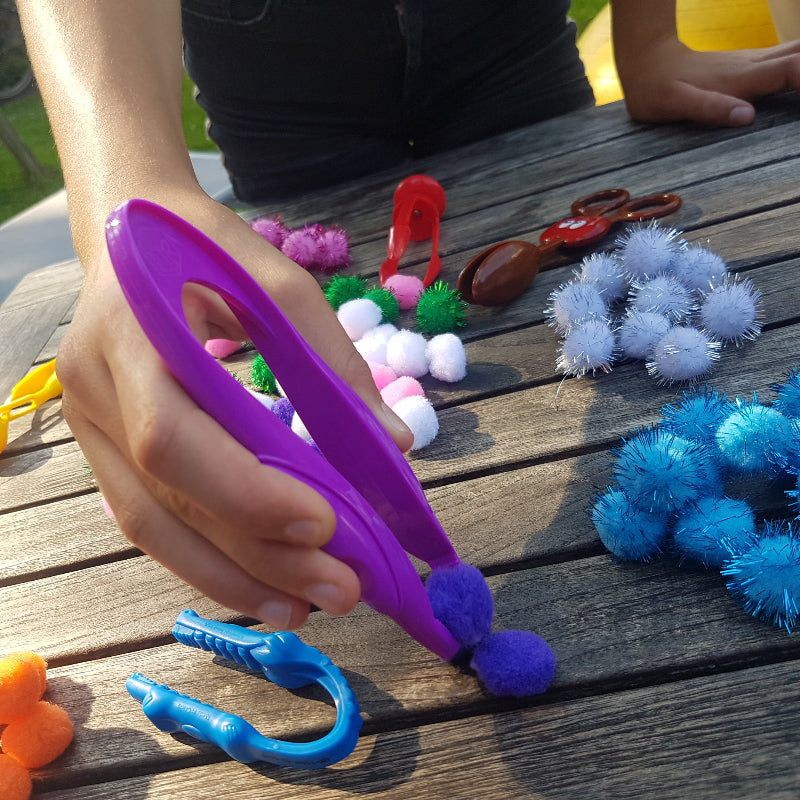
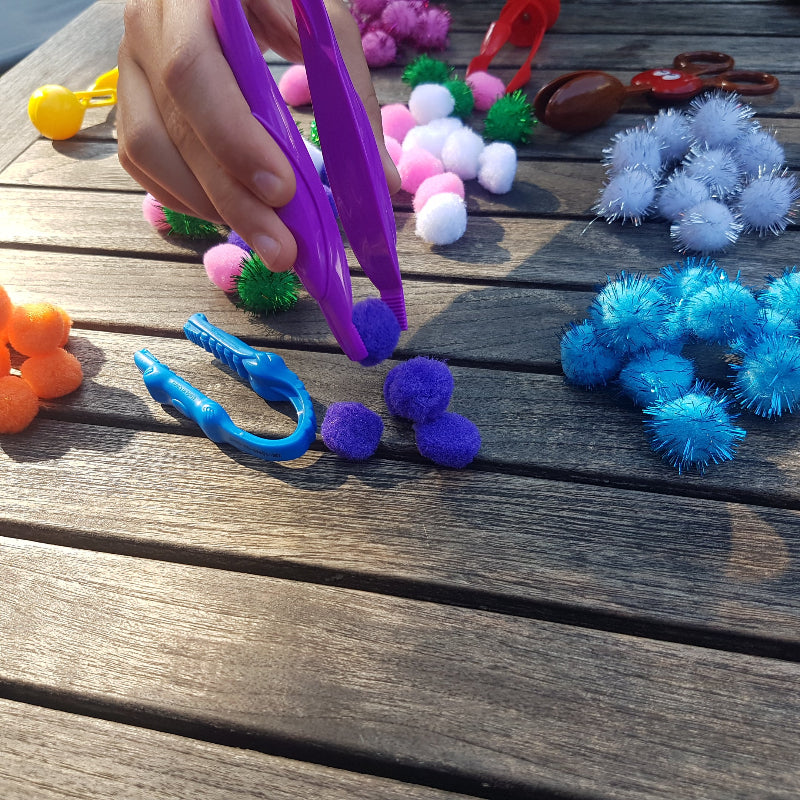
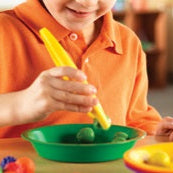
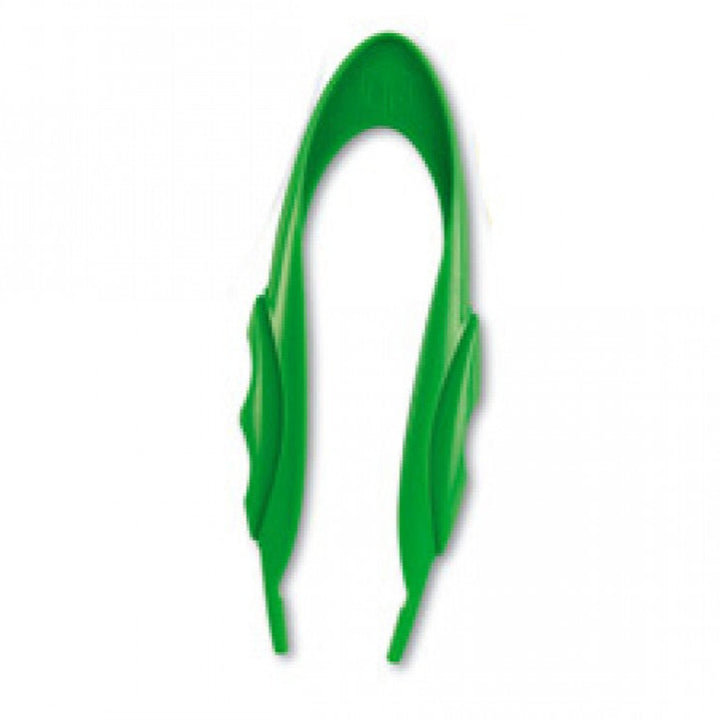
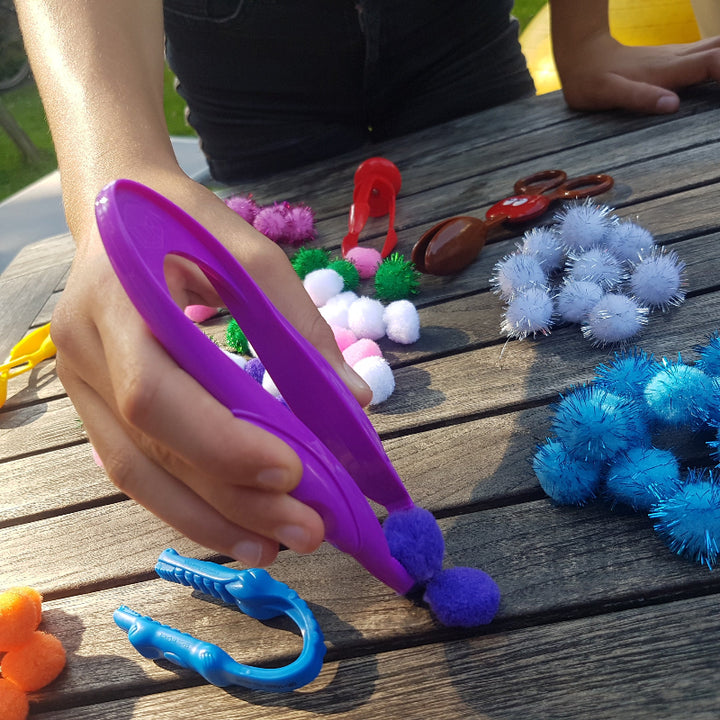
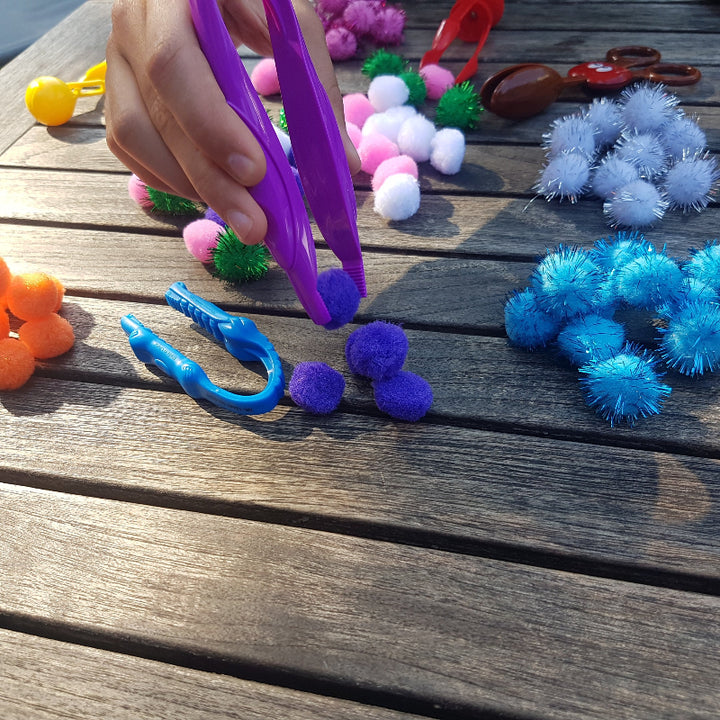
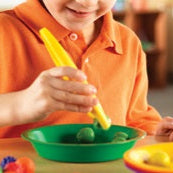










































Leave a comment